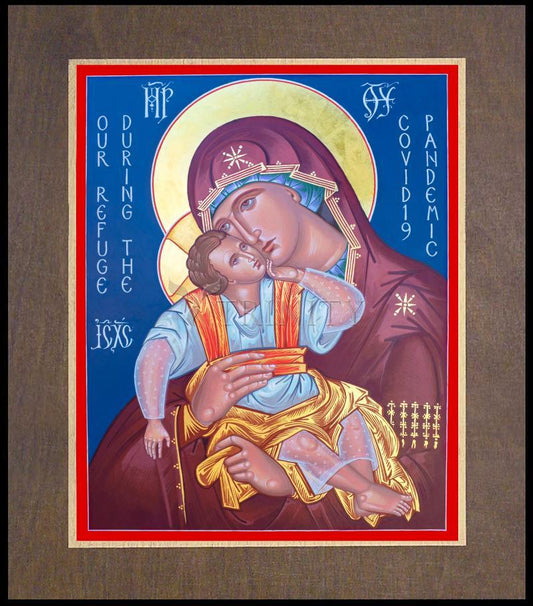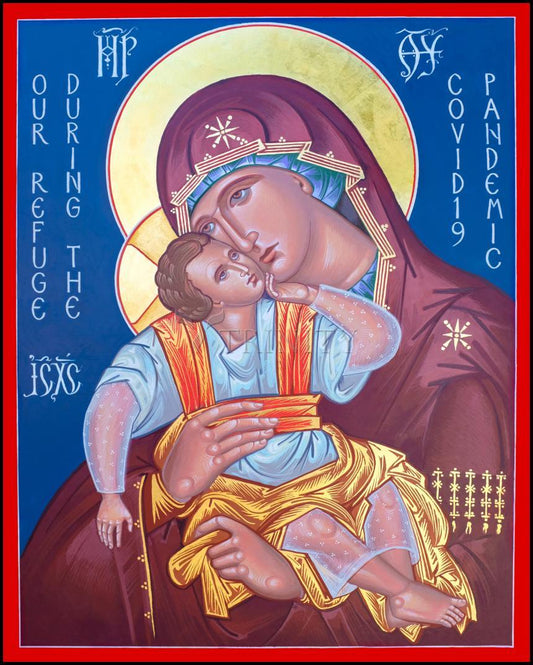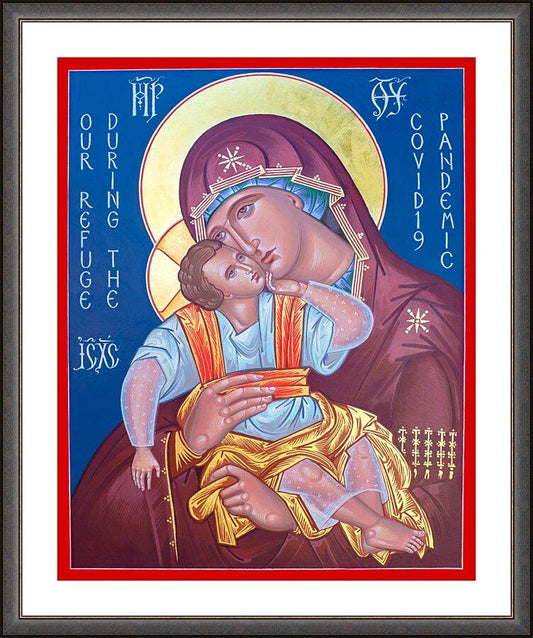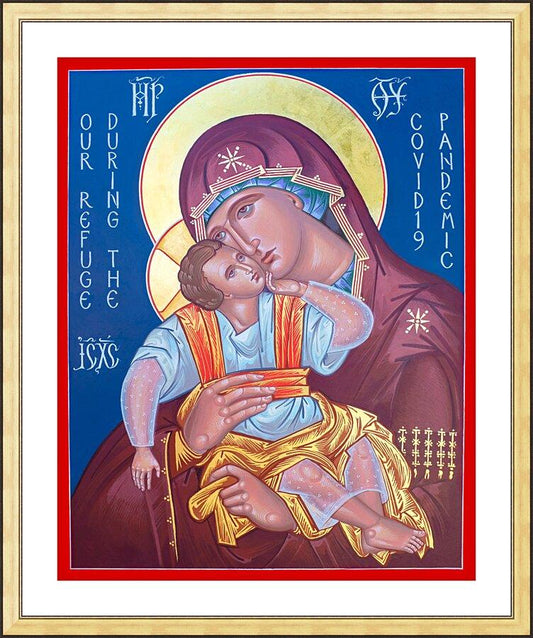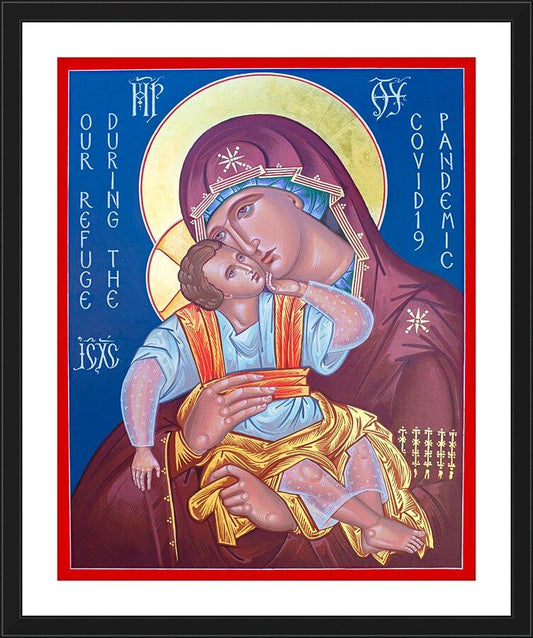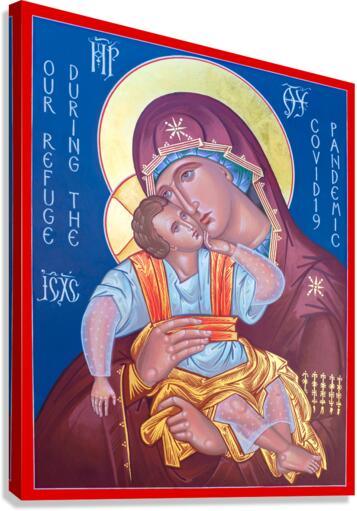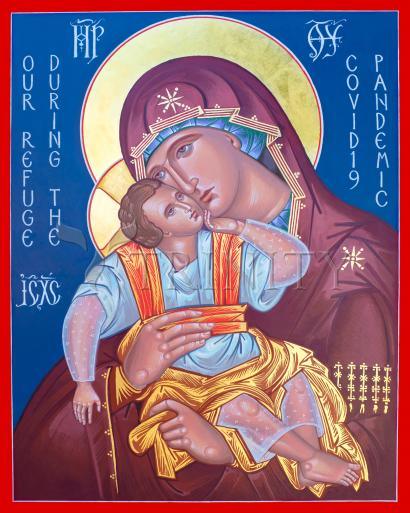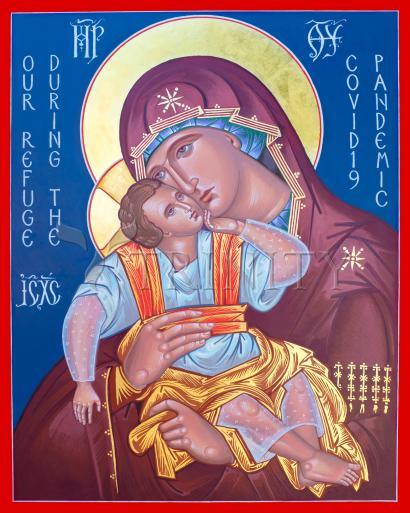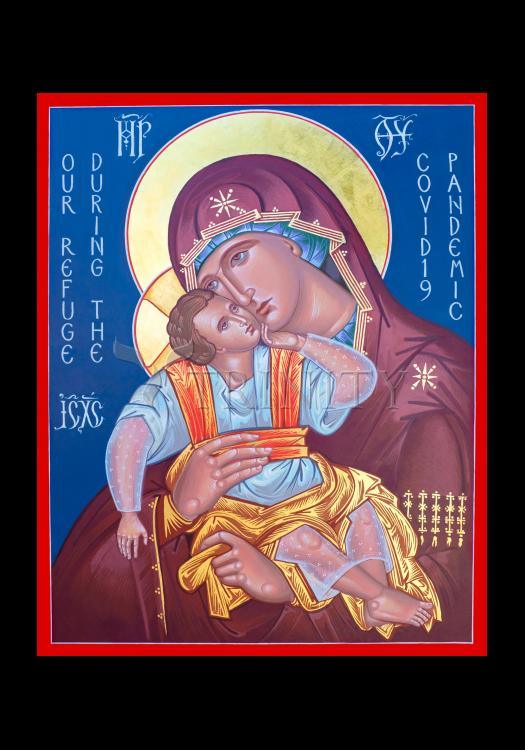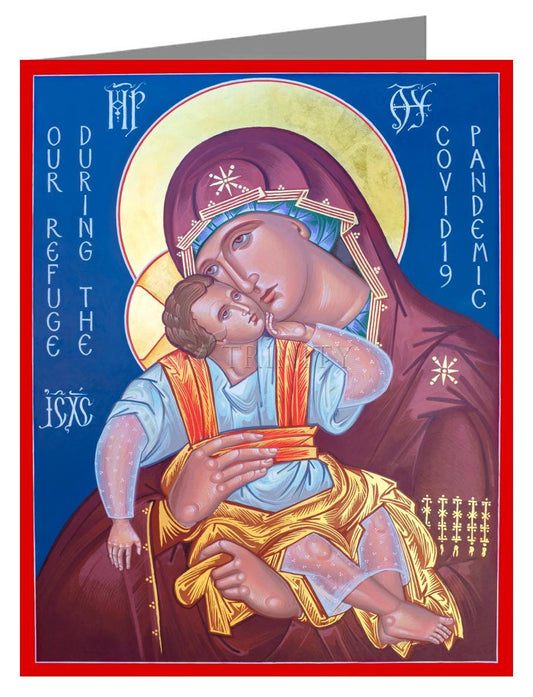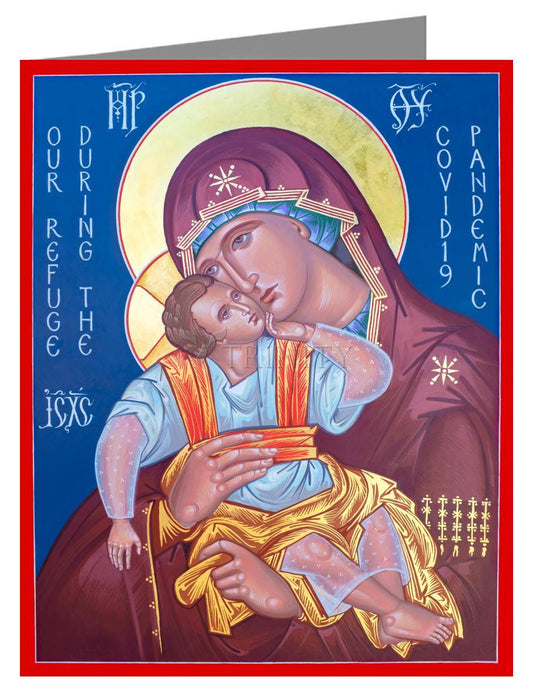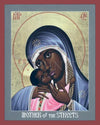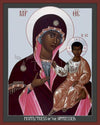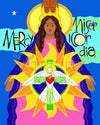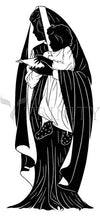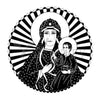The icon of the Virgin is of the glykophilousa type, which translates to "loving kindness" or "sweet kissing." The first prototype of this icon is ascribed to Saint Luke who tradition tells us was the first iconographer, as well as an evangelist and physician. The glykophilousa type differs from other images of the Virgin inasmuch as the child is portrayed in proportions of a child rather than a small adult which we see in other icons of the mother and child. This is to emphasize His humanity. This would seem to be consistent with the tone of Luke's Gospel, e.g., "Mary pondered these things in her heart." Tradition tells us this icon was sent to Theophilus with the Gospel.
Apart from the obvious theme of loving-kindness, the icon speaks to another issue. That is that Mary had the foreknowledge of the Passion of Christ; this explains the gaze and introspective attitude of the Virgin's position. This later developed into the Madonna of Perpetual Help. In that icon, of course, the angels flanking the Virgin hold the instruments of the Passion. Later, during the High Renaissance this morphed into "Madonna of the Goldfinch."
It is not an icon, but rather a painting. The goldfinch sits on the pudgy, Italian babe. People at that time believed the goldfinch ate thorns, hence the foreknowledge of the Passion.
In our icon, the monograms to the left of Christ are the abbreviation of Isus Xristos. These are the first and last letters in each word. The line on top of the monograms identify it as an abbreviation.
The monograms above the Virgin are the first and last letters of Mater Theou which translates as Mother of God.
These monograms are also an abbreviation.
The designs on the shoulders and head of the VIrgin are an ancient symbol of her virginity and represent the she was a virgin, is a virgin and always will be a virgin. These are possibly of Syriac origin, but are always present on her Maphorion.
The color of red is a symbol of holiness and the blue or green is a symbol of the earth, hence holiness covers earth.
In icons of an adult Christ, the colors are reversed so earth covers holiness.
The fringe on her right side is a pictorial reference to priestly fringe.
The Christ Child's halo has three crossbars (in this icon one of them is hidden by the Virgin's head. This is the stavrophos or Christ light and is reserved for the Christ alone. Within these bars are the Greek characters for "He Who Is." This is a reference to the voice of God in the Burning Bush which identifies himself as "I Am Who Am."
Because the one crossbar is missing, I chose to not include these characters.
The icon was inspired by the last paragraph of Pope Francis' prayer for the Covid Pandemic in which he identifies the Virgin as our refuge.



